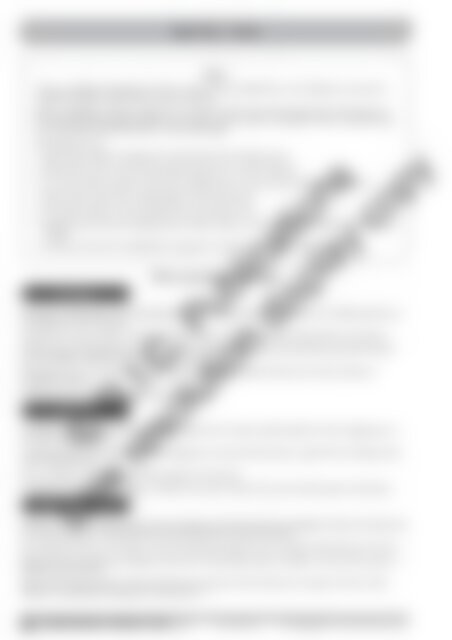8503RB Comprehension through cloze_Book 4_Print low res watermarked
Create successful ePaper yourself
Turn your PDF publications into a flip-book with our unique Google optimized e-Paper software.
Teacher notes<br />
Cloze<br />
Cloze is a reading comprehension activity in which words are deleted from a text. Readers are required to<br />
complete the blanks as they read to construct meaning.<br />
When completing a <strong>cloze</strong> text, readers have to search on either side of the missing word in the sentence to<br />
find what should be included. Readers must consider context as well as vocabulary. Cloze is commonly used<br />
as an assessment method because of its many advantages.<br />
Advantages of <strong>cloze</strong>:<br />
• helps identify reader knowledge and understanding of the reading process<br />
• helps teachers work out the cueing systems readers use to construct meaning<br />
• can assess reader vocabulary and topic knowledge (and can also promote vocabulary production)<br />
• helps readers monitor their understanding of a text as they read<br />
• encourages readers to think critically about, and analyse, a text<br />
• reinforces grammatical knowledge because readers need to work out what part of speech is required to fill<br />
the gap<br />
• reinforces syntactical knowledge (the arrangement of words and phrases in a sentence).<br />
Predicting<br />
Other comprehension strategies<br />
Predicting is thinking about what might happen in the story, using information gathered so far. Predicting links prior<br />
knowledge and new information.<br />
Predicting encourages readers to look for evidence or clues in the text and revise initial predictions if necessary.<br />
Predictions are not wild guesses, but well thought out, logical ideas based on the information provided and some<br />
prior knowledge. Predictions will not always be correct.<br />
Predicting can occur at word, sentence or text levels. Students may predict what the next words, sentence or<br />
paragraph might say.<br />
Predicting can occur before, during or after reading a text.<br />
Visualising<br />
Visualising involves using prior knowledge and experiences to create a mental image from what is happening in a<br />
text read, viewed or heard.<br />
Visualising brings a text to life, engages the imagination and uses all of the senses—sight (colour and shape), taste,<br />
smell, sound and touch.<br />
No two students visualise the same mental image for the same text.<br />
Visualising is like creating an image on a blank movie screen. The text is the script and the reader is the director.<br />
Making connections<br />
© R.I.C. Publications<br />
Low <strong>res</strong>olution display copy<br />
Making connections involves linking to the text, background information (prior knowledge) and personal experiences,<br />
to construct meaning. It includes text-to-self, text-to-text and text-to-world connections.<br />
Text to self links the text to the reader’s own life and personal experiences; for example, ‘That reminds me of when ...’.<br />
Text to text links the reader’s knowledge of other texts to the text being read; for example, ‘This text is the same as/<br />
different to the text about ...’.<br />
Text to world connections links what the reader knows about the world to the text; for example, ‘This text is like/<br />
different to something that happened in the real world ...’.<br />
iv<br />
COMPREHENSION THROUGH CLOZE <strong>Book</strong> 4 978-1-922426-73-4 R.I.C. Publications ® www.ricpublications.com.au


















